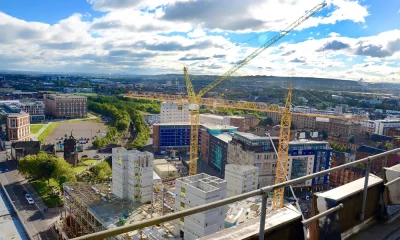Scotland will not be able to transition to a circular economy without “sweeping changes” in the built environment and construction sector, according to Zero Waste Scotland’s (ZWS) Circularity Gap Report.
The study shows that the built environment is an essential pillar in moving to a circular economy and that reusing materials and reducing waste on-site are major areas for action.
The report shows that only 1.3% of the resources Scotland uses are cycled back into the economy, with over 98.7% of Scotland’s material use coming from virgin resources.
This in addition to Scotland’s per capita material footprint is nearly double the global average, according to the study.
However, by making construction more efficient in the use of materials and resources, using housing more efficiently and giving materials a longer life, ZWS says the industry could reduce Scotland’s overall material use by 11.2% and reduce its carbon footprint by 11.5%.
The report’s publication coincides with ZWS launching the Site Waste Reduction Protocol which aims to help construction professionals accurately measure and classify site waste and take steps to prevent cash losses.
Commenting on the report, Zero Waste Scotland’s Stephen Boyle, said: “The Circularity Gap Report shows us in no uncertain terms how much of a problem material waste is for the construction sector but it can be hard to know where to start in tacking it effectively.
“The Site Waste Reduction Protocol sets out a simple and robust method for getting a comprehensive picture of what materials are being wasted and where, and which ones are costing you the most financially and environmentally.
“This allows construction professionals to target action on specific materials, and do it based on their either financial or environmental priorities.”

